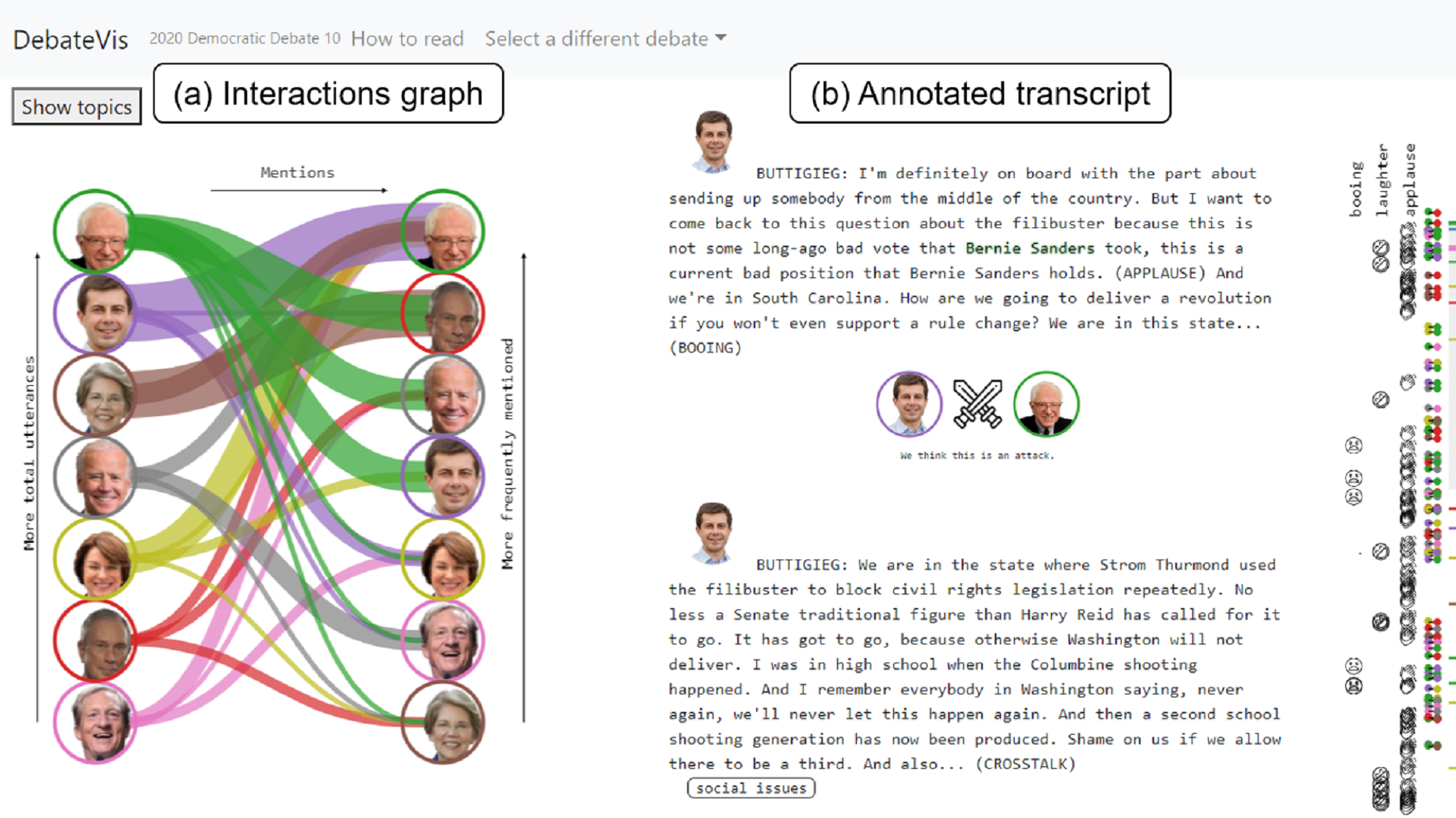DebateVis: Visualizing political debates for non-expert users

Abstract
Political debates provide an important opportunity for voters to observe candidate behavior, learn about issues, and make voting decisions. However, debates are generally broadcast late at night and last more than ninety minutes, so watching debates live can be inconvenient, if not impossible, for many potential viewers. Even voters who do watch debates may find themselves overwhelmed by a deluge of information in a substantive, issue-driven debate. Media outlets produce short summaries of debates, but these are not always effective as a method of deeply comprehending the policies candidates propose or the debate techniques they employ. In this paper we contribute reflections and results of an 18-month design study through an interdisciplinary collaboration with journalism and political science researchers. We characterize task and data abstractions for visualizing political debate transcripts for the casual user, and present a novel tool (DebateVis) to help non-expert users explore and analyze debate transcripts.
Authors
Citation
DebateVis: Visualizing political debates for non-expert users
Laura South, Michail Schwab, Nick Beauchamp, Lu Wang, John Wihbey, and Michelle A. Borkin. IEEE Transactions on Visualization and Computer Graphics—VIS/TVCG. 2020. DOI: 10.1109/VIS47514.2020.00055
PDF | Preprint | DOI | Homepage | Supplement | Video Preview | Video Presentation | BibTeX
Khoury Vis Lab — Northeastern University
* West Village H, Room 302, 440 Huntington Ave, Boston, MA 02115, USA
* 100 Fore Street, Portland, ME 04101, USA
* Carnegie Hall, 201, 5000 MacArthur Blvd, Oakland, CA 94613, USA



